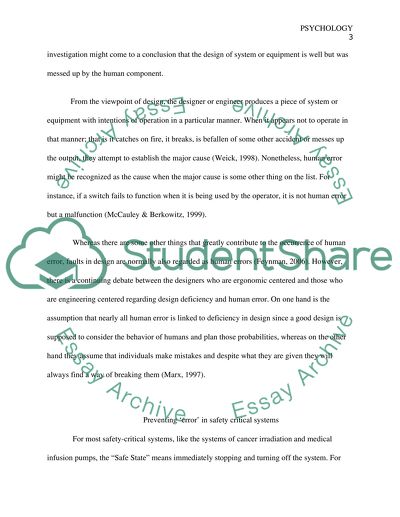Cite this document
(“Human Error within Safety Critical Systems Essay”, n.d.)
Human Error within Safety Critical Systems Essay. Retrieved from https://studentshare.org/psychology/1440099-1-what-is-human-error-how-might-we-prevent-ycherroryie-in-safety-critical-systems-and-is-it-possible-to-have-a-generic-theory
Human Error within Safety Critical Systems Essay. Retrieved from https://studentshare.org/psychology/1440099-1-what-is-human-error-how-might-we-prevent-ycherroryie-in-safety-critical-systems-and-is-it-possible-to-have-a-generic-theory
(Human Error Within Safety Critical Systems Essay)
Human Error Within Safety Critical Systems Essay. https://studentshare.org/psychology/1440099-1-what-is-human-error-how-might-we-prevent-ycherroryie-in-safety-critical-systems-and-is-it-possible-to-have-a-generic-theory.
Human Error Within Safety Critical Systems Essay. https://studentshare.org/psychology/1440099-1-what-is-human-error-how-might-we-prevent-ycherroryie-in-safety-critical-systems-and-is-it-possible-to-have-a-generic-theory.
“Human Error Within Safety Critical Systems Essay”, n.d. https://studentshare.org/psychology/1440099-1-what-is-human-error-how-might-we-prevent-ycherroryie-in-safety-critical-systems-and-is-it-possible-to-have-a-generic-theory.


